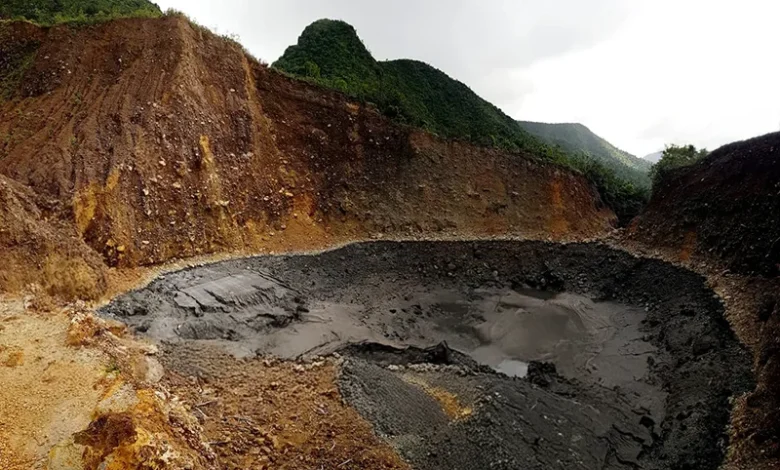Volcanic Activity in Dominica

Volcanic activity in Dominica has significantly shaped the island’s rugged landscape, rich biodiversity, and geothermal features. Known as the Nature Island of the Caribbean, Dominica is home to nine potentially active volcanoes, the highest concentration in the world for such a small area. The island’s landscape is adorned with volcanic peaks, hot springs, fumaroles, and boiling lakes, offering unique opportunities for eco-tourism, scientific research, and geothermal energy development.
Dominica’s Major Volcanic Features
Dominica’s volcanoes, primarily stratovolcanoes, are distributed along a north-south axis. The key volcanic centres include:
- Morne aux Diables: Located in the northernmost part of the island.
- Morne Diablotin: The highest peak in Dominica at 1,447 meters in the north.
- Morne Trois Pitons: Standing at 1,342 meters, it’s central to the Morne Trois Pitons National Park.
- Micotrin: Associated with the Wotten Waven Caldera, located in the southern region.
- Morne Watt: Situated near the Valley of Desolation and the Boiling Lake.
- Morne Anglais: Prominent in the southern part of the island.
- Morne Plat Pays: Also known as the Soufrière Hills, located in the extreme south.
- Morne Patates: Near the village of Soufrière, associated with historical eruptions.
- Wotten Waven Caldera: A significant volcanic structure encompassing several geothermal features.
About Wotten Waven Caldera
The Wotten Waven Caldera is a prominent geological formation in the Roseau Valley of Saint George Parish. Identified in 1985, the caldera measures approximately 7 km by 4.5 km and is partially fault-controlled. It encompasses the village of Wotten Waven, renowned for its Natural Sulphur Springs such as Ti Kwen Glo Cho, Tia’s Hot Spa, Screws Sulphur Springs and Bongo Baths. The caldera was formed by subsidence following the eruption of the Roseau Tuff, with deposits dating back over 46,000 years.
Boiling Lake and Valley of Desolation
Within the Morne Trois Pitons National Park, a UNESCO World Heritage Site, lies the famous Boiling Lake, the second-largest hot lake in the world. This flooded fumarole emits volcanic gases from molten lava beneath the Earth’s crust, creating bubbling greyish-blue water enveloped in steam. The trek to the lake passes through the Valley of Desolation, an area rich in geothermal activity with steam vents, hot springs, and boiling mud pools.
Recent Volcanic Activity (Last 20 Years)
Seismic Swarms and Earthquakes
- 2000-2005: Increased seismic activity was recorded around the Morne Plat Pays volcanic complex in the south. The events were characterized by shallow volcanic earthquakes, prompting heightened monitoring.
- 2009: A significant earthquake swarm occurred near the Morne Aux Diables volcano in the north, indicating possible magma movement beneath the volcano.
- 2018-2019: Starting in December 2018, a swarm of volcanic earthquakes emanated from the Wotten Waven Caldera area. Activity peaked on June 15, 2019, with over 500 events recorded in a 24-hour period. These earthquakes were felt by residents and prompted increased vigilance from the Seismic Research Centre.
Monitoring Efforts
The Dominica Office of Disaster Management and the University of the West Indies Seismic Research Centre closely monitor volcanic activity. Real-time seismic networks and GPS stations are employed to detect ground deformation and seismic events, ensuring timely warnings and public safety.
Geothermal Features and Sustainable Tourism
Dominica’s geothermal features are central to its sustainable tourism initiatives. Attractions like the Waitukubuli National Trail, especially Segment #3 passing through Wotten Waven, offer immersive experiences of volcanic terrains. The presence of hot springs and natural sulphur baths promotes wellness tourism, attracting visitors seeking therapeutic benefits.
Fertile volcanic soils support lush rainforests teeming with biodiversity. The island is home to rare plant species and wildlife, including the endemic Sisserou Parrot and the Jaco Parrot. Protected areas like the Morne Trois Pitons National Park preserve these habitats and contribute to conservation efforts.
Volcanic Monitoring and Preparedness
Dominica has established comprehensive disaster preparedness plans, including:
- Early Warning Systems: Utilizing seismic data to forecast potential eruptions.
- Public Education Campaigns: Informing residents about evacuation routes and safety measures.
- Emergency Response Teams: Coordinating with regional and international agencies for efficient disaster management.
Local communities are involved in preparedness activities, enhancing resilience. Regular drills and community meetings ensure that residents are informed and ready to respond to volcanic threats.
Geothermal Energy Development
Dominica is leveraging its volcanic activity for geothermal energy development. Key initiatives include:
- Geothermal Power Plant: An agreement signed in December 2023 with Ormat Technologies Inc. to develop a 10 MW geothermal power plant in Laudat, expected to be operational by the end of 2025.
- Funding: In April 2024, the government secured over EC$100 million to finance construction, aiming to integrate geothermal energy with existing hydroelectric plants in the Roseau Valley.
Environmental and Economic Benefits
- Renewable Energy: Increasing renewable energy in the national grid from 25% to 51%.
- Emission Reduction: Expected to reduce greenhouse gas emissions by approximately 38,223 tons of CO₂ per year.
- Economic Growth: Lowering electricity costs, reducing dependence on fossil fuels, and creating job opportunities in the renewable energy sector.
Volcanic activity in Dominica is a defining aspect of the island’s identity, influencing its geography, ecology, culture, and economy. The presence of multiple dormant and active volcanoes presents both challenges and opportunities. Through vigilant monitoring, disaster preparedness, sustainable tourism, and innovative geothermal energy projects, Dominica is harnessing its volcanic heritage to foster a resilient and prosperous future for its people and environment.




